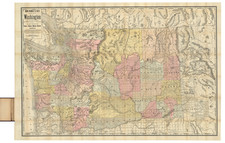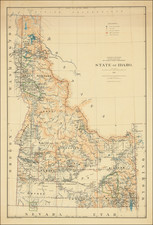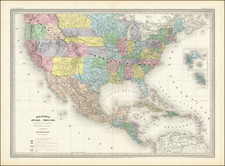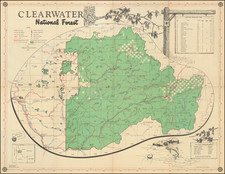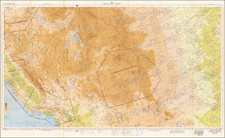This early and highly detailed map, titled "Railroad and County Map of Idaho" by George F. Cram, provides an intricate representation of Idaho's railroads, towns, cities, mountain ranges, and county configurations, circa 1888.
The map showcases the burgeoning infrastructure of Idaho in the late 19th century, revealing the prominence of railroads and their importance in connecting towns and cities across the state. With early county configurations displayed, it offers valuable insight into the development and organization of Idaho's administrative divisions during this period.
In addition to the railroads and counties, the map highlights various geographical features, including rivers, mountain ranges, and mining areas. It also includes Native American names and locations, providing a glimpse into the cultural and historical context of Idaho at the time.
In conclusion, George F. Cram's "Railroad and County Map of Idaho" is a captivating and informative piece that offers a wealth of information about Idaho's development in the late 1800s. This map is an invaluable resource for collectors, historians, and anyone interested in the growth of Idaho and the role of railroads in shaping the state's landscape and communities.
George F. Cram (1842-1928), or George Franklin Cram, was an American mapmaker and businessman. During the Civil War, Cram served under General William Tecumseh Sherman and participated in his March to the Sea. His letters of that time are now important sources for historians of the Civil War. In 1867, Cram and his uncle, Rufus Blanchard, began the company known by their names in Evanston, Illinois.
Two years later, Cram became sole proprietor and the company was henceforth known as George F. Cram Co. Specializing in atlases, Cram was one of the first American companies to publish a world atlas. One of their most famous products was the Unrivaled Atlas of the World, in print from the 1880s to the 1950s.
Cram died in 1928, seven years after he had merged the business with that of a customer, E.A. Peterson. The new company still bore Cram’s name. Four years later, the Cram Company began to make globes, a branch of the business that would continue until 2012, when the company ceased to operate. For the final several decades of the company’s existence it was controlled by the Douthit family, who sold it just before the company was shuttered.











![[ Western United States -- Massive Idaho Territory ]](https://storage.googleapis.com/raremaps/img/small/99057.jpg)
